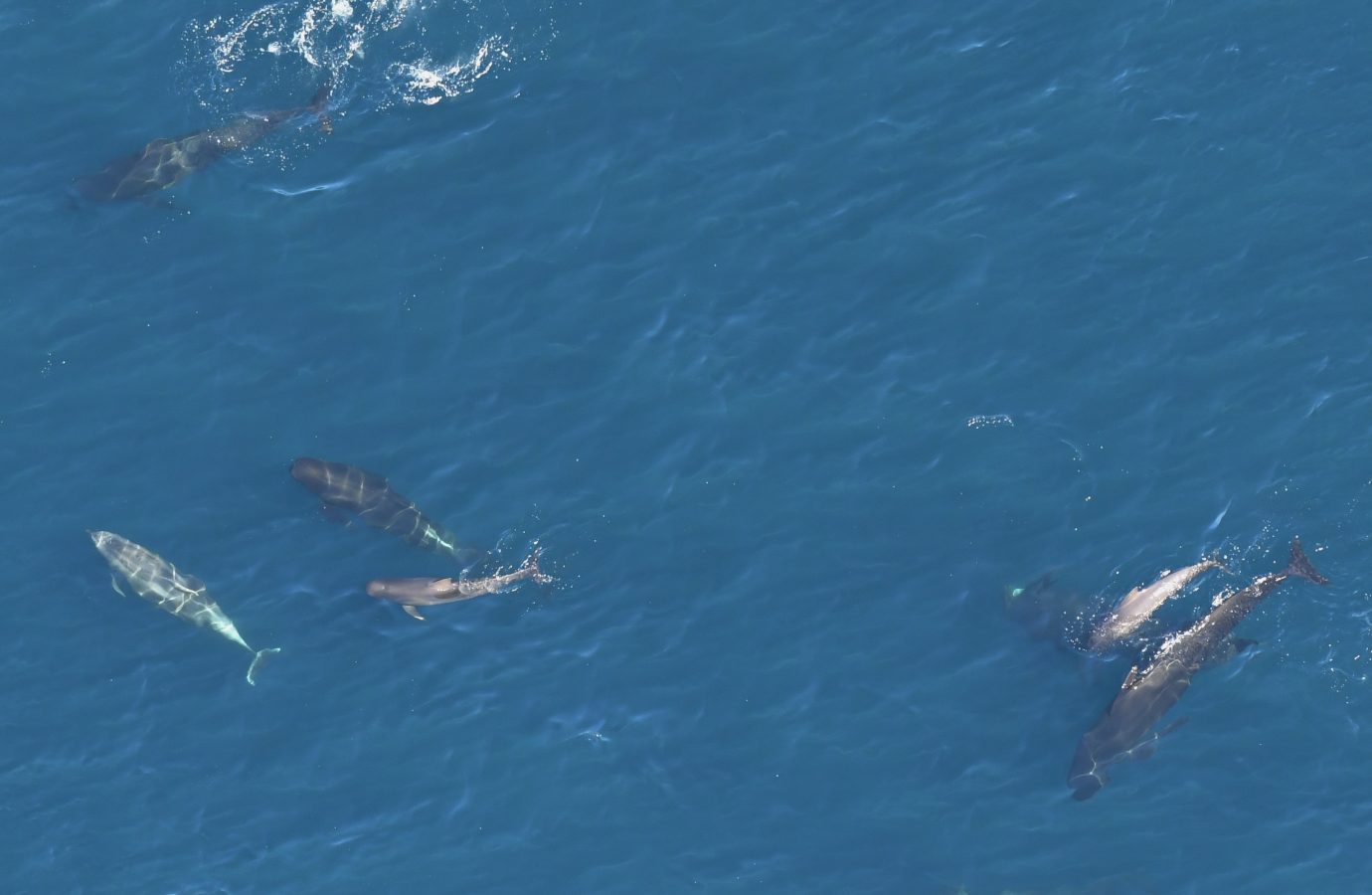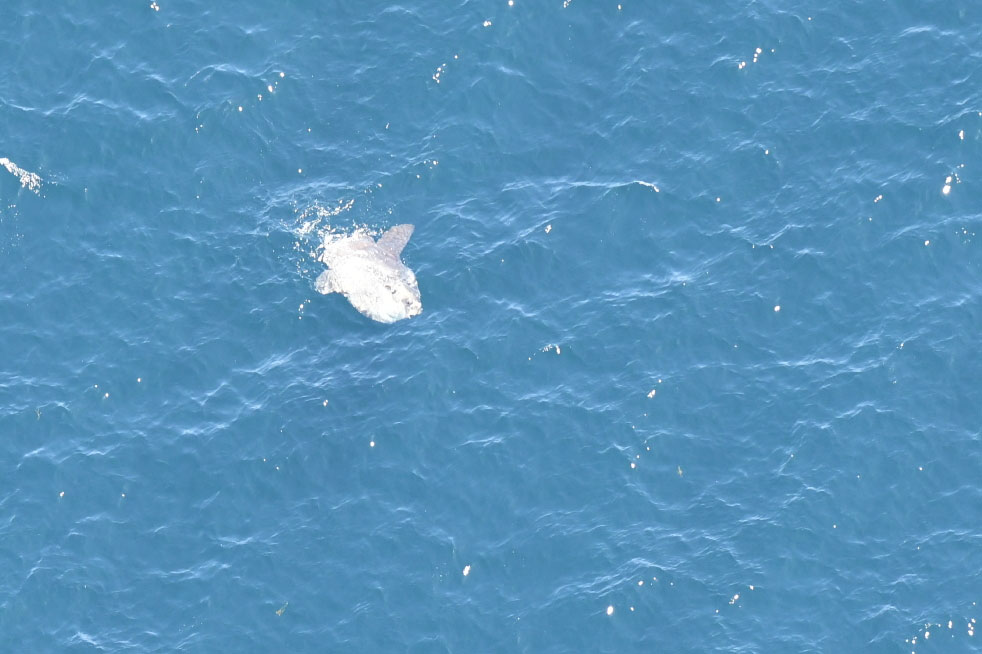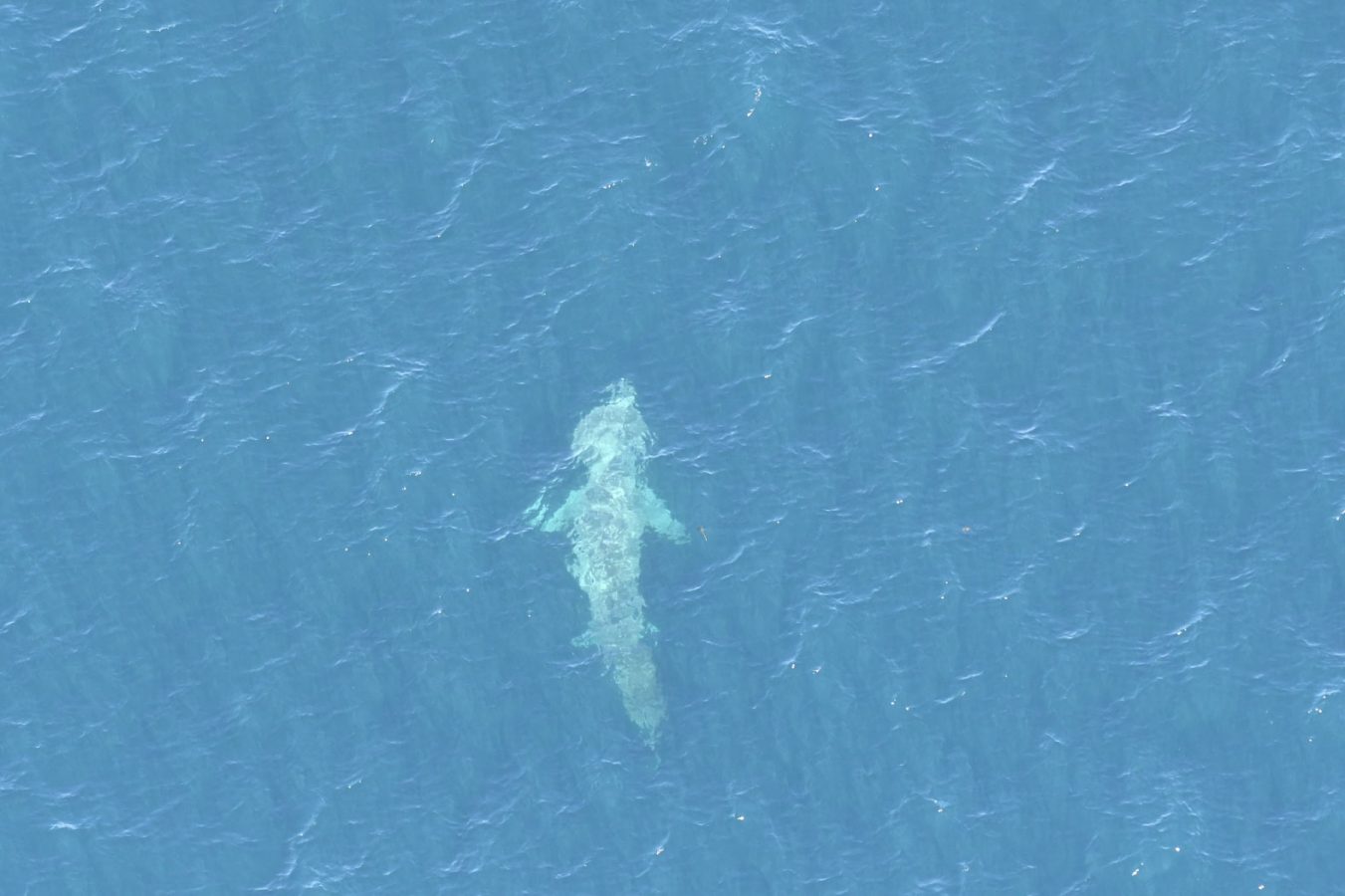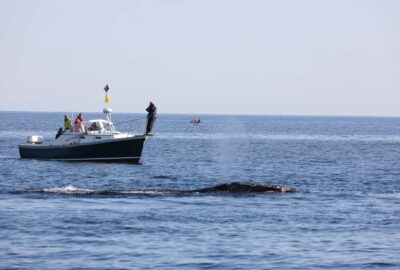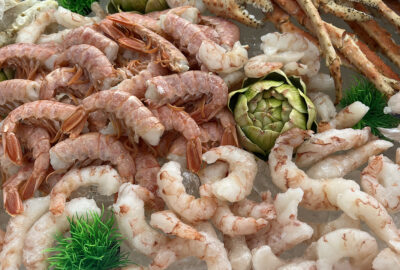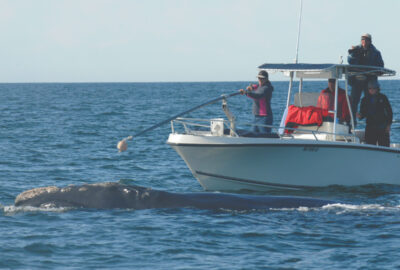We are SOLD OUT of tickets for today, Saturday July 5th.
Aerial Survey Highlights Diversity at Northeast Canyons and Seamounts Marine National Monument
April's survey yielded an extraordinary number of sightings of marine life within the monument's protected area.
By New England Aquarium on Thursday, May 10, 2018

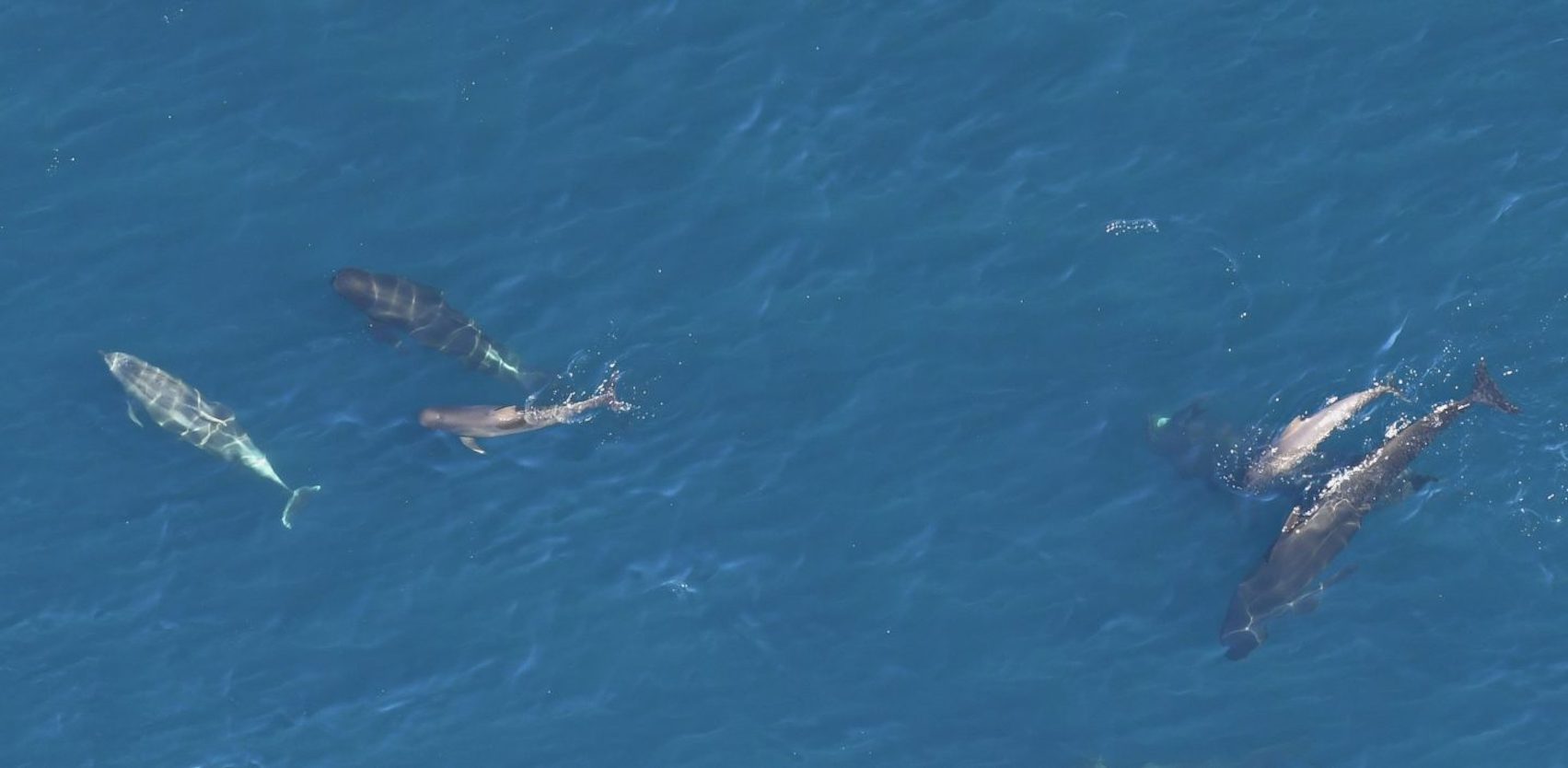
By Emily Greenhalgh
On April 23, 2018, a team from the Anderson Cabot Center for Ocean Life at the New England Aquarium spent the day 1,000 feet above the Atlantic Ocean in a small, four-seater plane to perform an aerial survey of the only marine monument on the Atlantic coast of the United States.
During the 4.5-hour survey, the third such survey since the summer of 2017, chief scientist Dr. Ester Quintana, observer Paul Nagelkirk, and their two pilots flew above the Northeast Canyons Marine National Monument to document marine life at the surface, examine seasonal differences in species presence and distribution, and catalog any human activity in this protected marine area.
The marine national monument was established in 2016 and is located roughly 130 miles southeast of Cape Cod. The region is renowned for its incredible biodiversity. The spring survey certainly supported the monument’s reputation. The team made 32 sightings of 339 individual animals.
Quintana called the number of sightings “extraordinary for such the small area.”
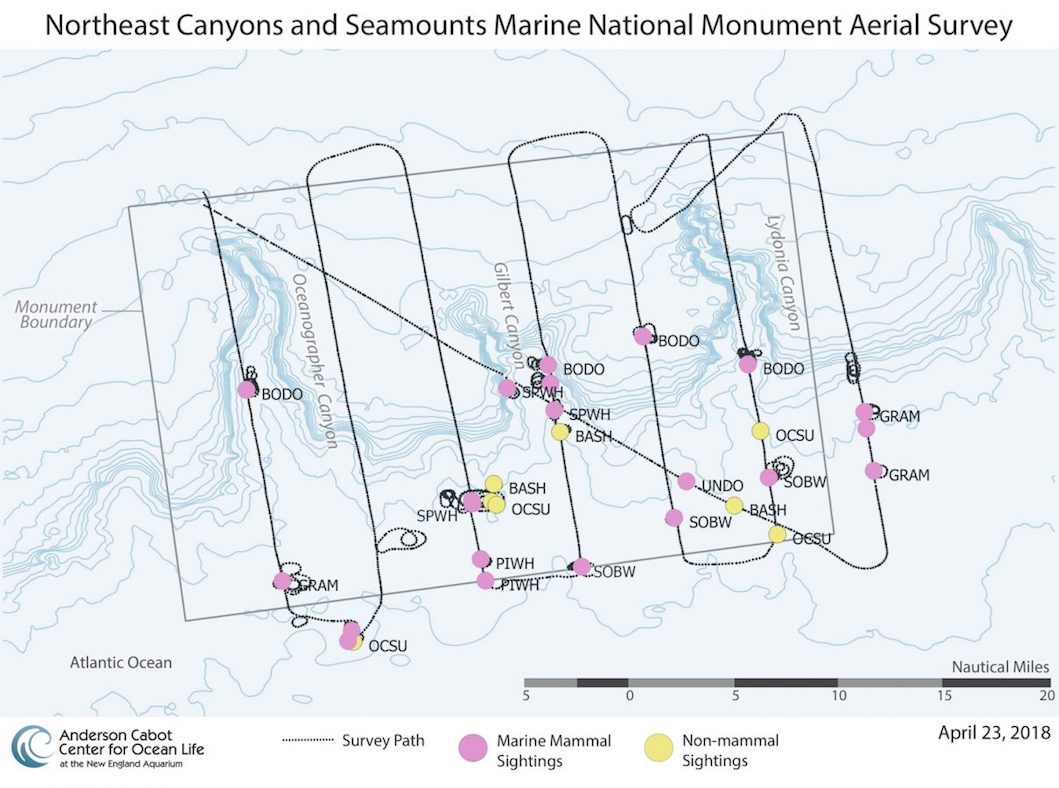
The day’s sightings included bottlenose dolphins (169), Risso’s dolphins (44), Sowerby’s beaked whales (13), pilot whales (57), sperm whales (4), and other dolphins whose species could not be determined (44).
Two sightings involved a mixed group of bottlenose dolphins and pilot whales with up to 50 and 30 individuals of each species, respectively. Such mixed groups are not uncommon. What was a surprise were the observations of three groups of Sowerby’s beaked whales. Because Sowerby’s beaked whales spend little time at the surface and their dives can last up to half an hour, the species is rarely seen at sea compared to other beaked whale species.
Studies suggest that beaked whales are strongly attracted to the environment created by submarine canyons, and unlike many beaked whales, Sowerby’s appear to mostly feed on mid-water fish species. Sowerby’s beaked whales have been rarely but widely reported across the North Atlantic, in the seas around Norway, the United Kingdom, and Iceland, and in the western North Atlantic off the coasts of Canada and Massachusetts.
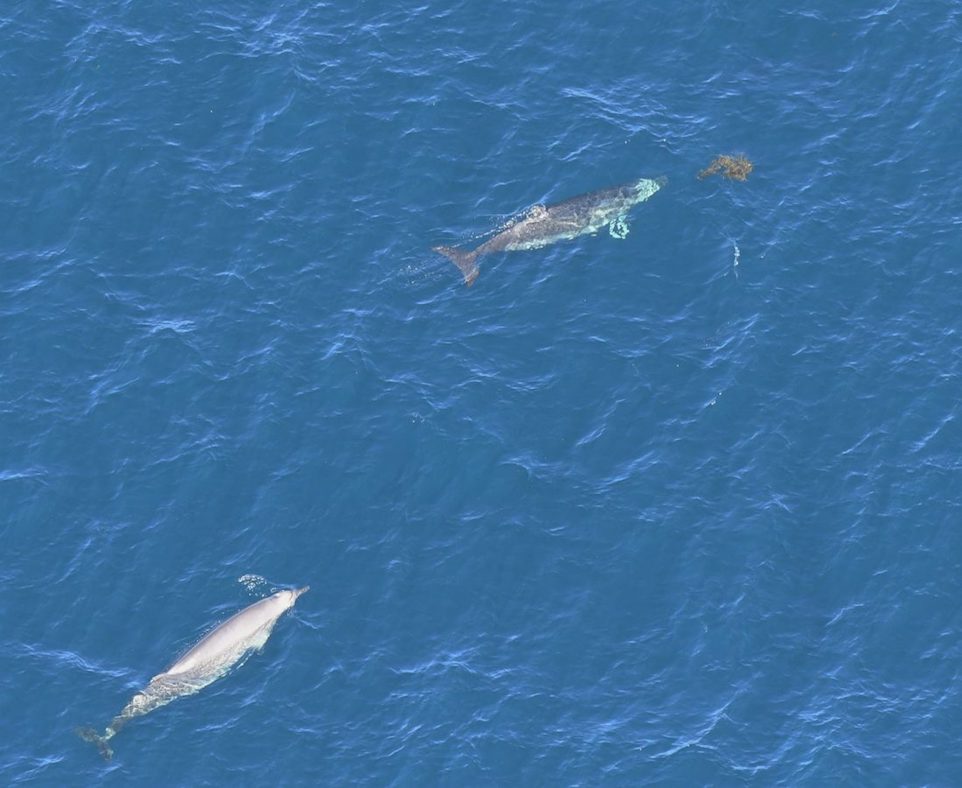
The team also spotted several large fish in this survey, including ocean sunfish, which are also known as Mola mola, (5) and basking sharks (3). The number of overall sightings (32) from this spring survey is comparable to the number of sightings of the 2017 summer survey (35) but higher than the November survey results (27). However, in the spring, the total number of individuals observed was higher than in other seasons, and nearly twice the number of animals observed in the fall 2017 survey.
Unlike the recent November survey, the team did not observe any calves in its sightings, though the team saw a number of juvenile pilot whales. The changes in the kind of species observed is also worth noting.
“No baleen whales were observed this time, but there were more animals whose diet typically includes squid and fish, such as pilot whales, sperm whales, and Sowerby’s beaked whales,” said Quintana.
/
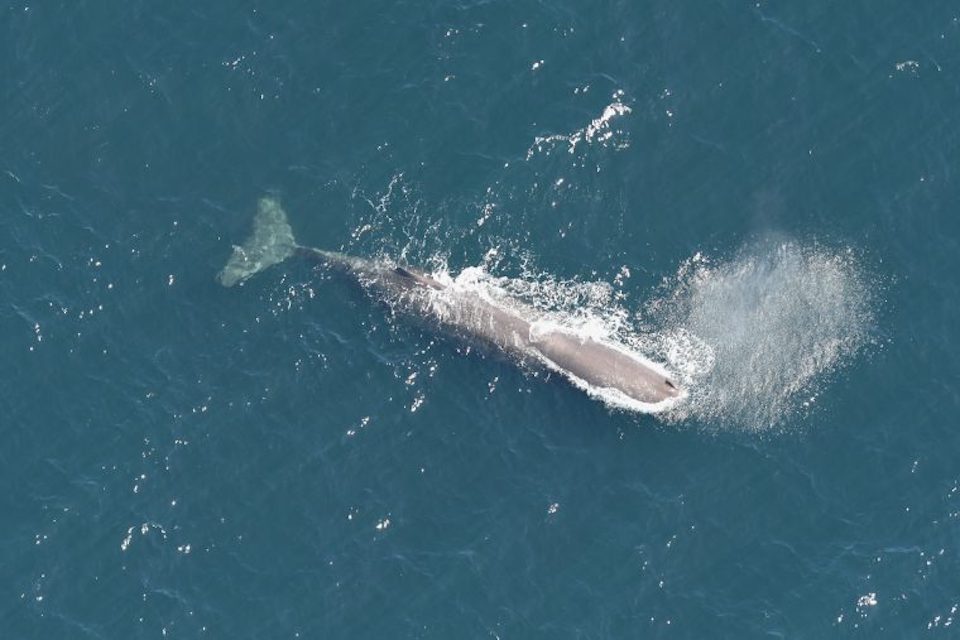
These results, coupled with the two 2017 surveys, are starting to paint a better picture of how different species utilize the monument’s waters. Although the sample size is small, the species, their numbers, and group composition appear to vary among seasons. This highlights that the Atlantic monument is used by many species at different times of year for different purposes.
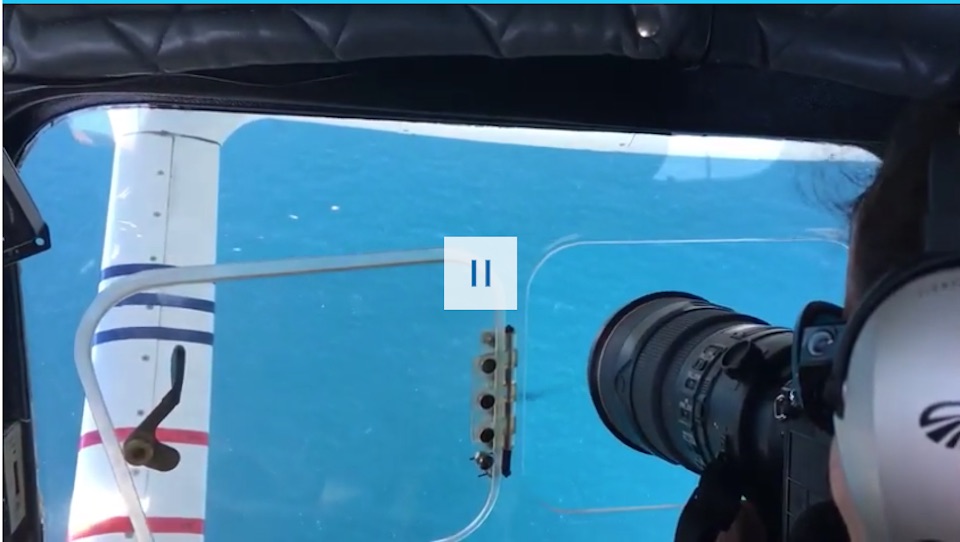
Northeast Canyons and Seamounts Marine National Monument Survey
Aerial photography during survey
“One of the reasons we do this work is that we are just discovering what’s going on out there,” said Dr. Scott Kraus, Vice President and Senior Science Advisor at the Anderson Cabot Center for Ocean Life. “This is an opportunity to see how animals use this habitat. No one has ever done this before.”
Even though the monument is a safe haven for these species, the 4,913 square miles of underwater canyons and seamounts aren’t free from human activity. During the survey, the aerial team saw two cargo vessels, one fishing vessel, and 21 records of stationary fishing gear.
“This area was declared protected because it is a fragile ecosystem with a wide diversity of corals, deepwater fishes, and invertebrates, and the upwelling features around these pristine canyons and seamounts support a vast array of whales, dolphins, and large pelagic fishes,” said Quintana. “As new policies recommend opening more waters off the coast of the United States to offshore drilling, it is incredibly important to have areas that remain protected.”
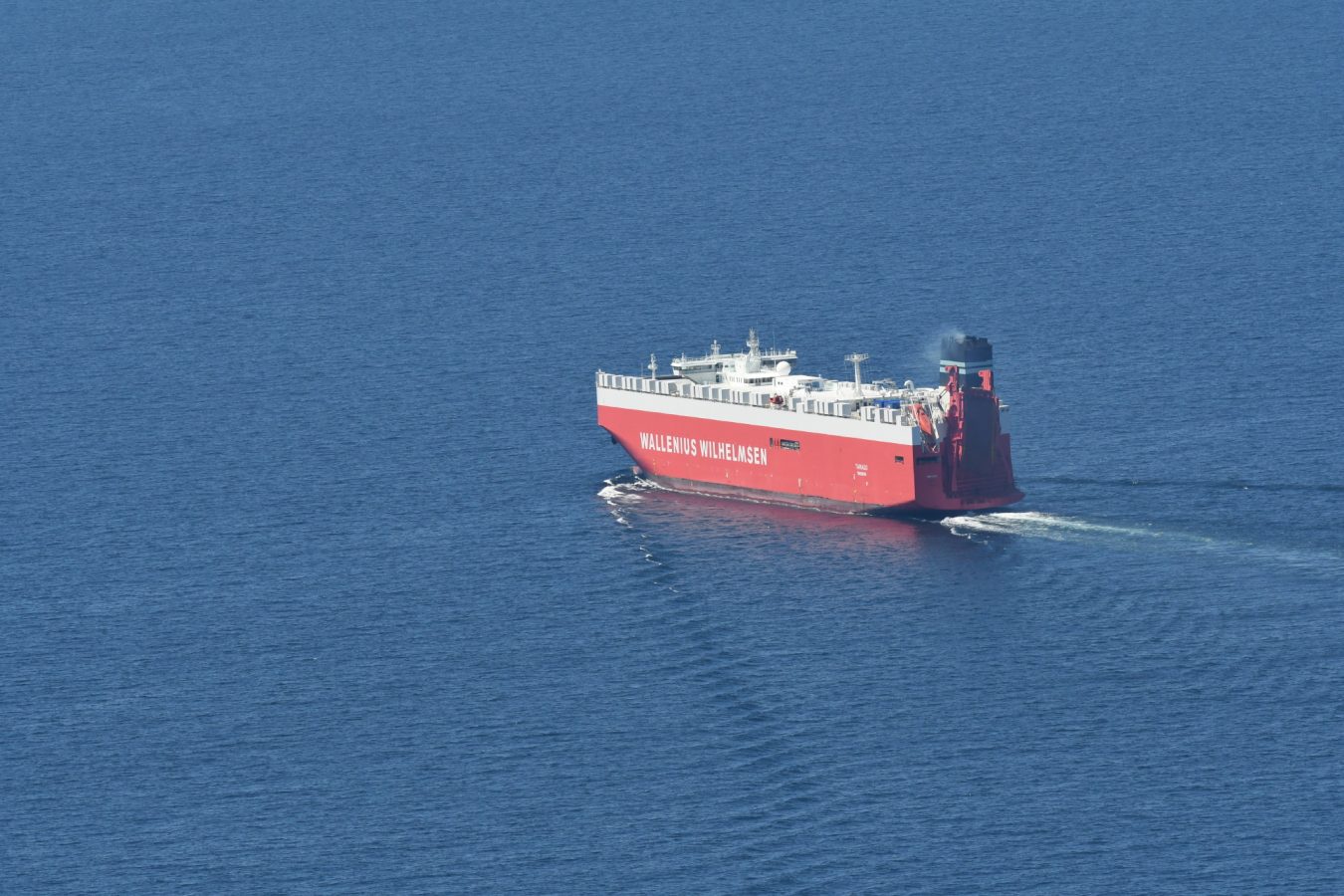
The U.S. Exclusive Economic Zone (EEZ), the waters off the coast of the U.S. and its territories where the nation has sovereign rights to any natural resources, is the largest in the world. The EEZ spans 3.4 million square nautical miles of ocean and 13,000 miles of coastline. In comparison, the 4,913 square miles of the Northeast Canyons and Seamounts Marine National Monument encompasses just a tiny percentage—just 0.11% of the U.S. EEZ.
“Most people do not realize that this monument represents about one-tenth of 1 percent of all U.S. ocean territorial waters. Yet, the wildlife diversity we are seeing out there highlights the importance of preserving its ecological value,” said Quintana.
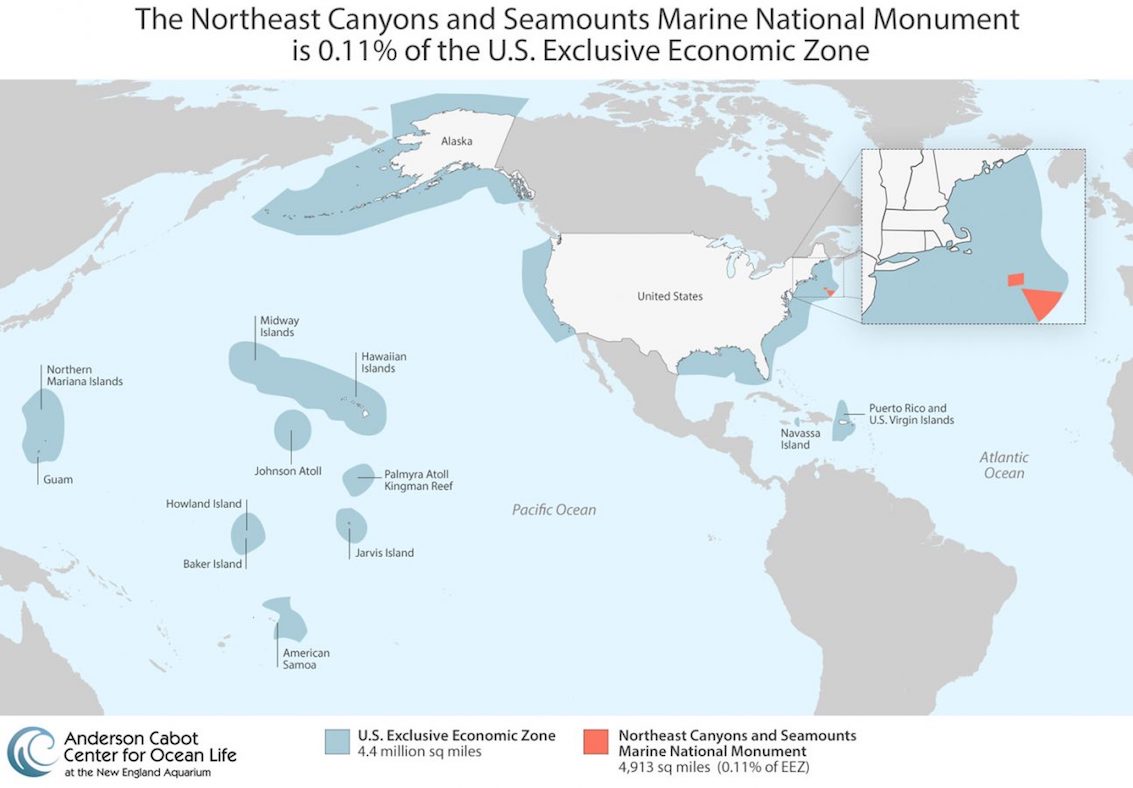
“These surveys continue to show the incredible abundance of marine life in the Northeast Canyons and Seamounts Marine National Monument,” said Kraus. “These sightings support the idea that this area is worthy of complete protection.”

